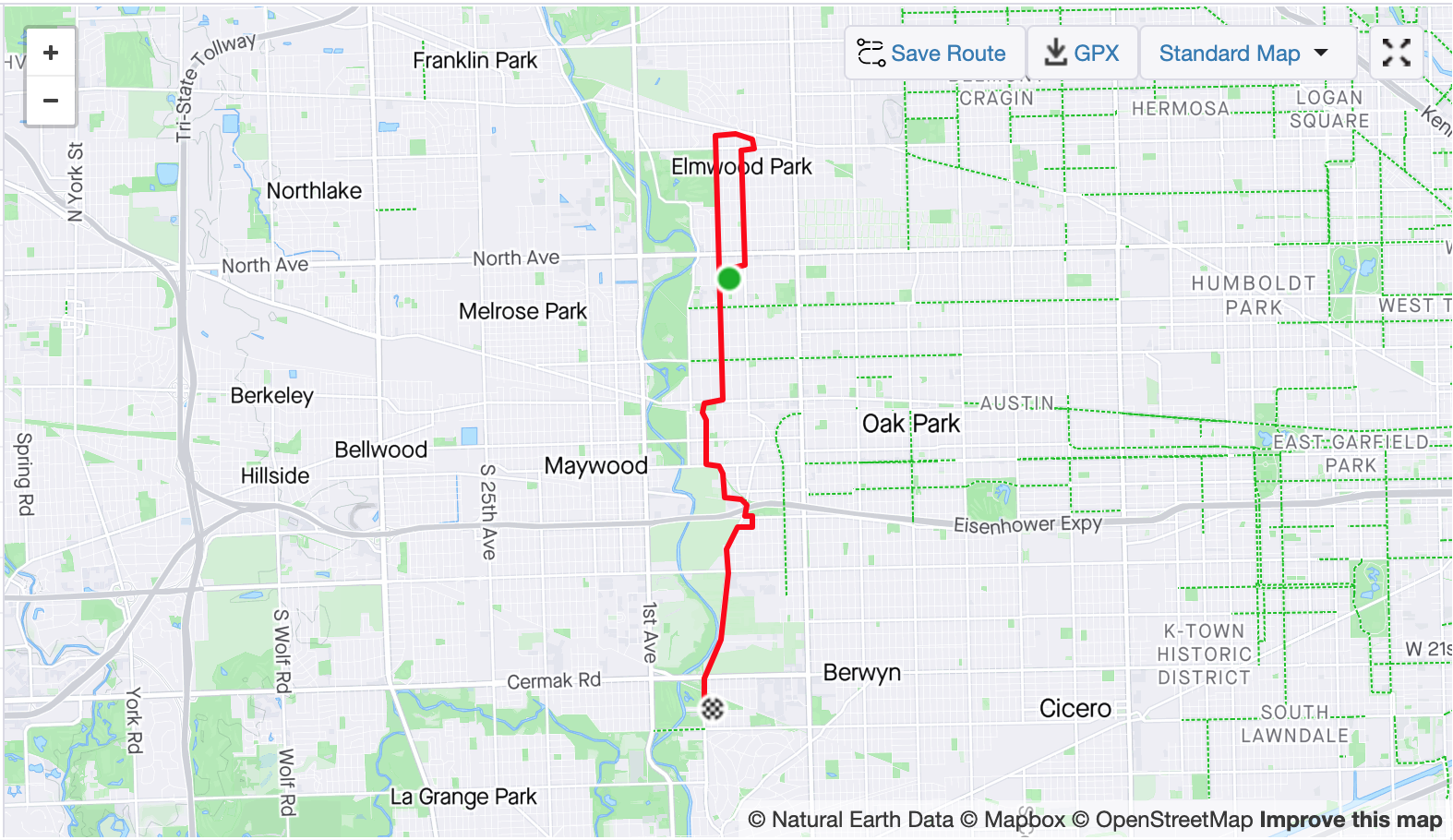running past graveyards

Waldheim Cemetery
It’s hard to avoid them. The western part of Cook County is essentially one long band of cemeteries running north-south at approximately the longitude of the Des Plaines River. Presumably, about 200 years ago, shortly after clearing the Natives out, this land was deemed suitably far enough from the action of Fort Dearborn and the core of the new, burgeoning city to be consecrated for the dead. It’s said that Forest Park, in particular, has more dead residents than living.
It’s easy to believe that running down Des Plaines Avenue south of Harrison. It’s a mile and a half to Cermak, with cemeteries on both sides of the road ranging farther than you can see to the east and west. The graveyards are denominational—Jewish, Lutheran, Catholic—and non-. They vary quite a bit in capacity, recency of use, and overall upkeep. I have plenty of time to observe and contemplate it all as I run past. There’s only one cross street with a traffic light in that 1.5-mile segment, which is another huge bonus to that stretch of running along with the, well, funereal quiet. It’s 15 minutes (at my current pace) to just be. Sometimes I even turn off my music to hear my footfalls and breathing.
The metaphor is, of course, almost too on-the-nose. Here I am, in late middle-age, training for my first and surely only marathon by literally running past graveyards. When I decided to do this sometime early this year, my primary reasoning was that it isn’t going to be any easier next year, or the year after. The Second Law marches along without pause or remorse. The virus certainly increased the entropy in some part of my cardiovascular system a couple years ago in a way that reduced my VO2 max by something like 50%. It has taken this long to adapt, and get comfortable with the idea that I’m a lot slower than I used to be. My heart rate soars pretty quickly when I exert myself now. And if I do let it get too high (a number at which I used to be able to cruise for hours), I feel lightheaded and weak. The exercise of managing my own ego, of letting go of what I was, is at least as much work as the running itself.
I knew when I started that I could manage that part. I know my mental capabilities pretty well at this point. When I make a decision, I execute. No, the risk was always going to be injury. And so it was that a half-mile past the cemeteries last week, eight miles into a planned eighteen, I stopped for a drink of water and couldn’t start again. Something was grievously wrong in my left hip. I tried to jog it out and made it less than a hundred feet. So reluctantly I called for a pickup. Part of the thing about these long runs is, of course, that you get pretty far from home. Too far to walk with one functioning hip.
The orthopedic PA diagnosed trochanteric bursitis, and her advice was to shut down completely for at least a week, probably more. My physical therapist agrees with the diagnosis, but thinks the injury was more of a fluky thing due to a minor fall I suffered earlier in that run rather than something long-term. He reasons, fairly, that I ran sixteen miles the week before without incident. Either way, I tried two miles today and it didn’t feel great. I’m seeing the actual orthopedic doctor this week, along with my regular trainer. I’ll surely get two additional diverse opinions to consider.1
The race2 is four weeks from today, and the most important training run, the 20-miler, is one week from today. The fundamental dilemma is simple: if rest is the answer, then I’ll show up at the starting line out of shape. But if I keep running, I’ll show up at the starting line injured. There’s an optimization problem here, some point on the graph where these two utility functions intersect at a maximum. There are other externalities, too, such as the possibility of a cortisone shot, cross-training to stay fit some other way (though those all involve tendons rubbing on those bursae, too), or some other orthopedic miracle. I guess we’ll see.
It seems nearly certain that the long, tranquil training runs that take me past all those resting souls are done for this year, though.

Strava map
-
While I love feedback to this blog, and I love you, I’m not looking for any further opinions or diagnoses unless you have actually trained for a marathon with this specific injury, or are a medical doctor who treated someone in this boat. <3 ↩︎
-
My fundraising page for Camp One Step is still open! It’s an amazing cause, whether I finish the race or not, and any little bit you feel like donating will go to help kids with cancer have great experiences at camp, regardless of their conditions. ↩︎
